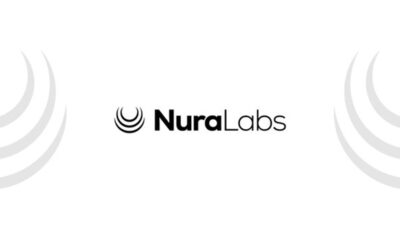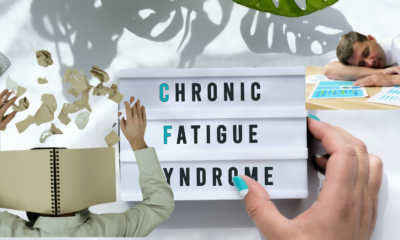Health & Fitness
From Diagnosis to Remission-The Journey Through Radiation Oncology

Radiation oncology is a complex and often overwhelming field of medicine. It can be difficult to navigate through diagnosis, treatment, and remission. In this blog post, we will provide an overview of radiation oncology, what to expect on the journey to remission, and provide helpful tips for living with and managing the side effects of treatment. We hope that by the end of this post, you will have a better understanding of radiation oncology and feel empowered and informed on your journey to remission.
If You’re Interested in Learning More: Michael Dattoli
Understanding Radiation Oncology
Radiation therapy is a powerful tool that can be used to treat a wide range of cancers. It’s important to understand the different types of radiation treatments available and what makes them so beneficial. Radiation therapy is a process that starts with a diagnosis. This is when the doctor determines which type of radiation treatment will be most beneficial for the patient. After the diagnosis, the process moves into planning and then into implementation – culminating in remission or cure.
There are many different types of radiation treatments available, each with its own benefits and potential side effects. Some common treatments include external beam therapy (X-rays), brachytherapy (i.e., using smaller doses of radiation delivered through a fine needle), and Radiotherapy Oncology Units (RTUs). Each type of treatment has its own strengths and weaknesses, so it’s important to choose the right one for your cancer.
Radiation therapy is an incredibly effective tool for treating cancer, but it’s not without risks. Side effects can occur after any kind of radiation treatment, but they are more likely to occur with higher doses or more intensive treatments such as RTUs. It’s important to understand these risks so that you can make informed decisions about your treatment options.
Along with understanding the side effects of radiation therapy, it’s important to have access to state-of-the-art technology in order to provide optimal care for your patients. This includes devices that help determine whether or not patients are responding well to their treatment and devices that help doctors monitor patients during their treatments in order to ensure their safety and achieve optimal results.
patient education is also critical when it comes to radiation therapy – making sure patients know what sorts of precautions they should take before their appointment and what they can expect afterward including long-term side effects. Finally, supporting your loved ones through this difficult time is essential – both emotionally and financially. So if you’re considering Radiation Oncology as a potential treatment option for yourself or someone you love, be sure to talk with your doctor about all aspects of this complex field!
What to Expect on the Journey to Remission
If you are or have been diagnosed with cancer, you know that treatment can be a long and challenging journey. Radiation oncology is a specialized field that uses radiation therapy to treat various types of cancer. Radiation therapy can be divided into three main categories: external beam radiation therapy, brachytherapy (in which radioactive material is placed inside the body), and radiosurgery (which uses high-energy X-rays to destroy cancer cells).
The risks and benefits of each treatment modality vary depending on the type of cancer being treated, but all radiation therapy has some risk associated with it. However, the risk of serious side effects from radiation therapy is very low when compared to other treatments available for cancer. In fact, the majority of people who receive radiation therapy experience no serious side effects at all.
After completing treatment, patients will typically require to follow up care in order to ensure that the tumor hasn’t returned or has not grown larger than expected. This follow-up care can include regular checkups and scans as well as treatments if necessary. Patients should also continue to take their medications as prescribed and make sure to follow their diet and exercise routine while they are undergoing treatment in order to maintain optimal health during this time.
It’s important to remember that there is no one path towards remission – each person’s journey will be unique based on their individual circumstances and symptoms. While support groups are often helpful for those going through traditional chemotherapy or surgery, they may not be as helpful for those receiving radiation therapy due to their unpredictable nature. That said, many supportive resources are available online or in your local community should you need them during your journey. So whatever stage you’re at – waiting for results or starting treatment – know that there is help available along the way!
Also, Read More Articles: Courage in the Face of Cancer-The Impact of Radiation Oncology
Understanding How Radiation Oncology Treats Cancer
Radiation oncology is a field of medicine that deals with the treatment of cancer with radiation. Radiation therapy is a powerful tool that can be used to kill cancer cells and help to shrink tumors. It works by using radiation to damage the DNA in the cancer cells, which can lead to their death. There are many different types of radiation therapy available, each with its own advantages and disadvantages. Below, we will outline the different types of radiation therapy and their role in cancer treatment.
Radiation therapy is a powerful tool that can be used to kill cancer cells and help to shrink tumors. It works by using radiation to damage the DNA in the cancer cells, which can lead to their death. There are many different types of radiation therapy available, each with its own advantages and disadvantages. Below, we will outline the different types of radiation therapy and their role in cancer treatment:
External-beam radiotherapy uses high-energy rays that are directed onto the tumor from outside the body. This type of radiation therapy is often used for cancers that are located near major organs, such as the brain or lungs. External-beam radiotherapy is often considered more effective than other forms of radiotherapy because it has a higher rate of killing tumor cells without causing serious side effects.
Internal-beam radiotherapy uses beams that are directed into the body through tiny holes called portals (usually in your back). This type of radiation therapy is often used for cancers located near vital organs or bone marrow (the soft bone inside your skull). Because internal-beam radiotherapy uses beams that pass through smaller areas than external-beam radiotherapy, it has a lower risk of causing side effects such as damage to surrounding tissue or organs. However, because internal-beam radiotherapy treats larger tumors than external-beam radiotherapy does, it may take longer for all tumor cells to be killed.
Brachytherapy uses multiple sources (usually six) of small radioactive sources placed directly on or close to your tumor(s). Brachytherapy treatments have improved accuracy over time and may be less traumatic than traditional surgery for removing tumors but carry an increased risk for local side effects such as pain relief becoming addictive or hair loss at sites treated with brachytherapy pellets (tiny pieces containing radioactive elements). In addition, there remains some uncertainty about long-term health risks from brachytherapy treatments due not only do we not yet fully understand all potential hazards but also because there continue to be unproven “new” studies being published seemingly daily.
Bottom Line
Radiation oncology is a complex and often daunting field of medicine. It requires extensive knowledge and skill to properly diagnose, treat, and manage the side effects of radiation therapy. Understanding the different types of radiation treatments available, as well as the risks associated with each, can help patients make informed decisions about their care. Additionally, it is important to remember that remission is a process rather than an event – one that can take months or even years to achieve. By arming oneself with knowledge and support throughout the journey, one can remain confident in their progress toward remission.
-

 Foreign Policy6 days ago
Foreign Policy6 days agoInside Schedule F: Will Trump’s Federal Workforce Shake-Up Undermine Democracy?
-

 Press Release5 days ago
Press Release5 days agoIn2space Launches Campaign to Make Space Travel Accessible for All
-

 Press Release1 day ago
Press Release1 day agoNura Labs Files Revolutionary Patent: AI-Powered Wallet Solves the $180 Billion Crypto Staking Complexity Crisis


































